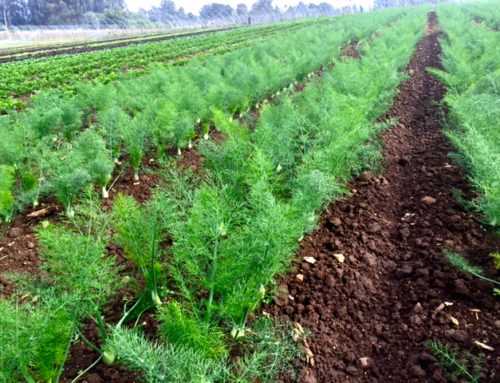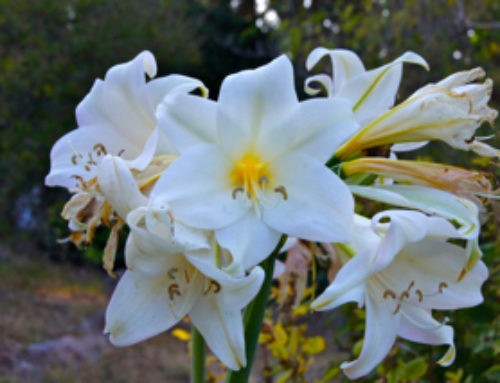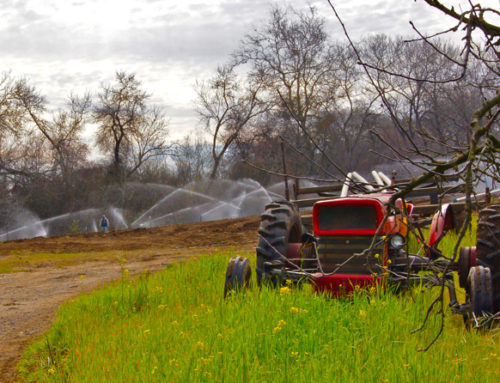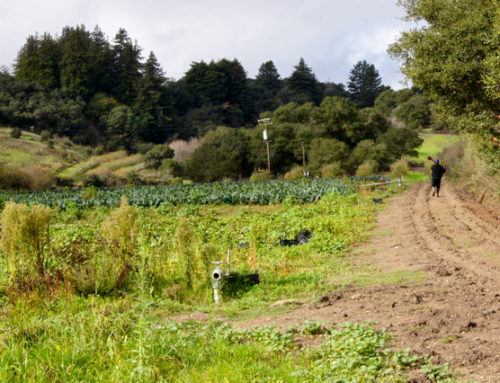The waiting is over; dry-farmed tomatoes will be in everyone’s share this week. What’s special about dry-farming? First, it doesn’t use much water but more importantly it brings the best flavor out of a tomato. Dry-farming tomatoes is a technique perfected a couple of decades ago by Molino Creek, a farming cooperative situated in the coastal hills above Davenport. We are fortunate to enjoy a similar microclimate. Dry-farming techniques involve proper spacing, soil moisture control, timely cultivation practices, soil rotation and a number of different fertility practices. Under optimum conditions the plants, although stressed from a lack of water, will stay healthy enough to yield tomatoes bursting with flavor.
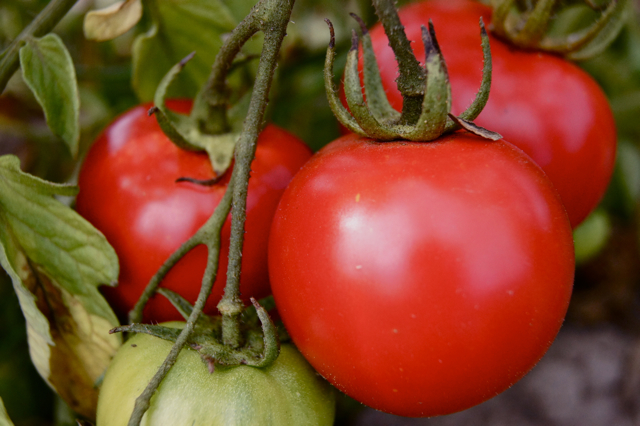
“Early Girl” is the variety of choice for dry-farming; it is one of the very few tomato varieties (possibly the only one) that can be dry-farmed. Although this popular tomato variety was bred in France, tomatoes find their origin in the impenetrable jungles of Central and South America. The Mayans called it “xtomatl” hence the name tomato. When the Spanish brought the first tomato to Europe the Church condemned eating tomatoes as a scandalous and sinful indulgence. The French on the other hand admired its sensuous appearance and were enticed by it, believing that the red fruit had aphrodisiac powers, and so called it “pomme d’amour” or love apple. Today, we probably couldn’t imagine anything more scandalous than not having tomatoes as part of our diet.
The crop of tomatoes we are now harvesting was sown in a greenhouse in mid-January and transplanted in the field in March. It takes over 6 months from planting the seed to finally harvesting the first tomatoes. To extend our harvest into the fall, we add two additional tomato plantings staggered 3 and 6 weeks apart.
Besides “love apples” we are starting to harvest our true apples. The first, the Summerfeld, might make it into our fruitshares this week to replace the strawberries, which are going through their natural seasonal downcycle.
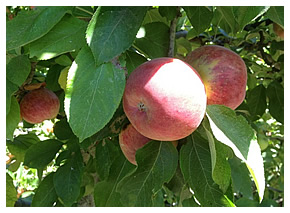
Summerfeld apples

